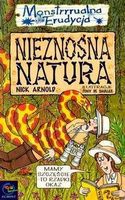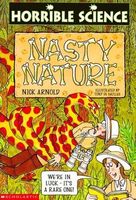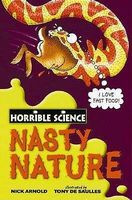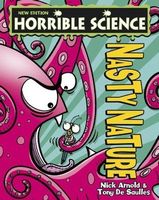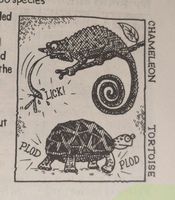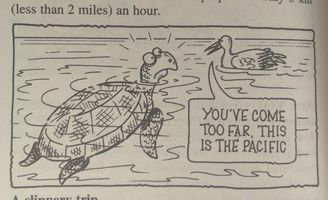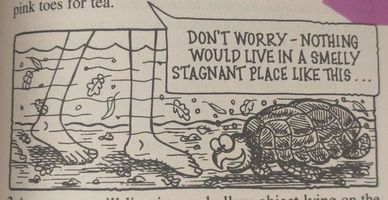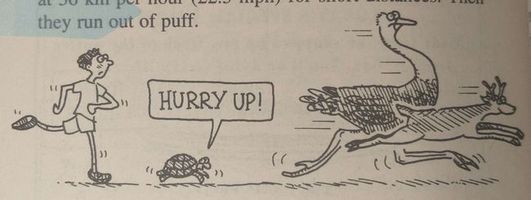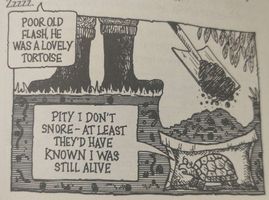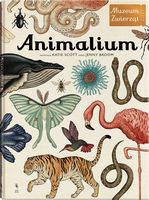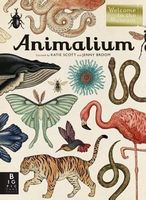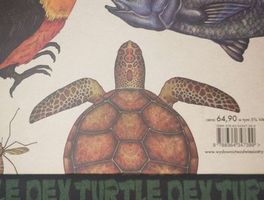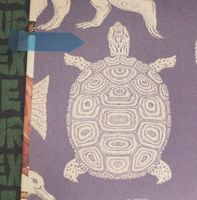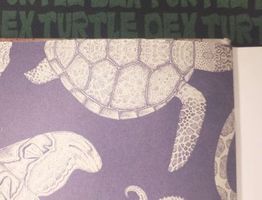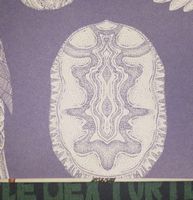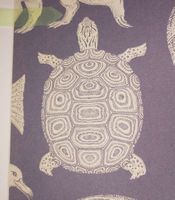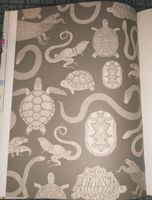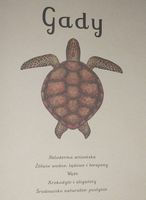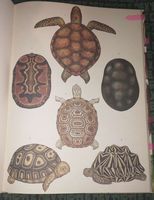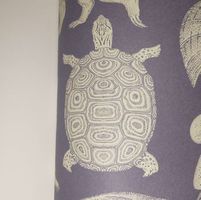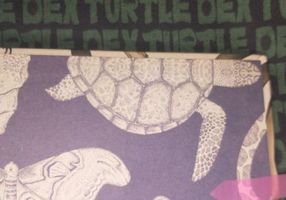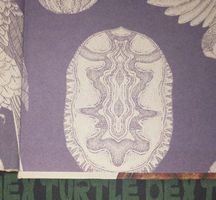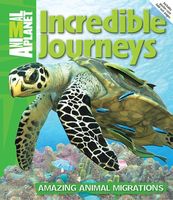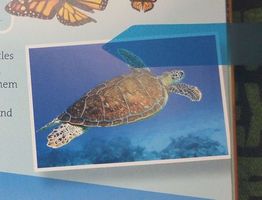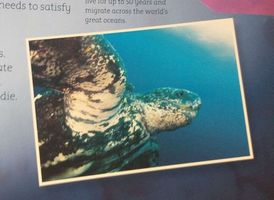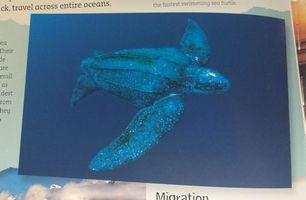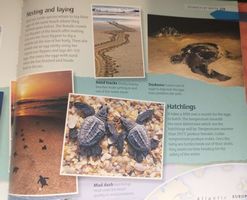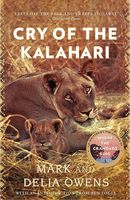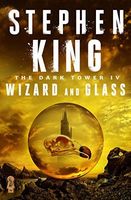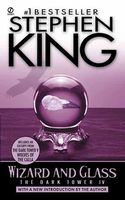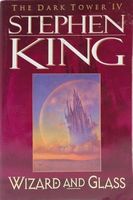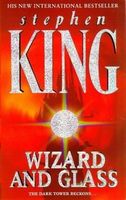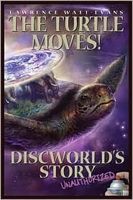 Title: The turtle moves! Discworld’s story (unauthorized)
Title: The turtle moves! Discworld’s story (unauthorized)
Author(s): Lawrence Watt-Evans
Release year: 2008
Publisher: BenBella Books
Why in Database: A book about the Discworld series. We found a lot of various turtle mentions in it, in total we found as many as 26 turtle fragments and we quote them all in our note:
The idea of a flat world carried through space by four elephants standing on the back of a gigantic turtle is absurd to begin with, but sure, I suppose you could get away with using it in one novel. Maybe two. Three if you stretched. But dozens of best-selling novels and an assortment of spin-offs?
I could invent a square world instead of a disc. Or an elephant car- tying four turtles—but that’s hardly got the same sort of appeal; the poor turtles would be forever slipping off, which would make for a very bumpy sort of world.
There’s a lot more than humor here, and what humor there is, is mostly character-based, not cheap puns and pratfalls, nor mere absurdity. Don’t let the giant turtle mislead you.
There’s no continuing plot, no planned end. The only obvious unifying feature is that all the stories take place on Discworld,*’ a gigantic rotating disc carried on the backs of four elephants, who are in turn standing on the back of a cosmic turtle named Great Atuin as she (or perhaps he) swims through space.
Well, it’s not about the elephants or the turtle. This has been the cause of some confusion among would-be readers. In all the stories to date, the elephants and turtle have never yet had a line of dialogue, or intervened in human affairs. In several stories, they’re never mentioned at all, even in passing.
* There’s also chelonium, the stuff that star turtles like Great Atuin are made of, and assorted others, but they’re less important.
OUR FIRST LOOK AT DISCWORLD came in 1983, with he publication of The Colour of Magic. The book opened with a prologue describing the Disc, introducing us to the cosmic tortoise Great Atuin, and the four giant elephants who stand upon Atuin’s back: Berilia, Tubul, Great T’phon, and Jerakeen.
He’s good at that sort of thing, and that’s on display right from the start, what with the awe-inspiring descriptions of the turtle and the elephants who, one has a suspicion, were really intended in the original myths to be metaphysical concepts, or perhaps metaphors of some sort, rather than literal ani- mals with meteor scars and hydrogen frost. One doesn’t expect to see words like “meteor” and “hydrogen” in a description of a giant turtle with a world on its back.
Another Hindu myth says that the world rests on the back of a gi- gantic tortoise. (Actually, that idea appears in several cultures, whereas the elephants are specifically from Hindu myth.) Mr. Pratchett has re- solved the apparent contradiction by suggesting that both are true—the elephants are standing on the tortoise, while the world rests upon their backs.
Here in this first two-page prologue, he manages to jam in not only a description of Great Atuin and its burden, but a brief account of the space program the kingdom of Krull has created to study the nature of their world.
Really, it cant have the same physics we do, or it wouldn’t be possible—a flat disc several thousand miles in diameter would not be stable, could not retain a breathable atmosphere, and wouldn’t gener- ally have gravity pointing the right direction. And we won’t even think about the turtle or the elephants.
“It was all very well going on about pure logic and how the universe was ruled by logic and the harmony of numbers, but the plain fact of the matter was that the Disc was manifestly traversing space on the back of a giant turtle and the gods had a habit of going round to atheists’ houses and smashing their windows.”
He is, in fact, a one-eyed tortoise, and his once-mighty lightnings are reduced to sparks that can barely singe a heretic’s hair.
Ephebe is a col- lection of all the stories told about ancient Athens, cranked up to the ab- surd—elected tyrants, labyrinths, philosophers arguing about tortoises, and leaping naked from the bath shouting “Eureka!”
Small Gods is also the source of my title. One doctrine of the Omnian church is that they live on a globe, and this talk of a disc-shaped world supported by elephants atop a gigantic turtle is nonsense—heretical, blasphemous nonsense that can get you executed.
The Omnians who dare to rebel against the church hierarchy take part of their inspiration from stories about people who have seen the edge of the world that the church says doesn’t exist; they believe that the Disc does rest on Great Atuin’s back, as described by travelers and in an Ephebian book entitled De Chelonian Mobile—‘The Turtle Moves.”
And the rebels, like Galileo, may pay lip service to the Omnian faith in public, but among themselves they remind one another, “The Turtle moves!” As John Morley said, “You have not converted a man because you have silenced him.” The truth will out in time. When the stories people live by become too far distanced from reality, they break down. Regardless of what anyone may teach, regardless of what anyone may want, the Disc does rest atop four elephants, who are standing on Great Atuin’s back.
And the Turtle moves!
If you think about it, it doesn’t really matter to your ordinary Omnian in the street that the Turtle moves, but it’s a short, catchy phrase that sums up the extent of the church’s lies. It works.
We’ve met a god of evolution, we’ve seen discussions of how natural selection has operated in producing the current faculty of Unseen University and the Disc’s remarkable crop of barbarian heroes, and we’ve had comments on the evolutionary value of tortoises learning to fly, on the survival value of stupidity in vampires, on the reproductive strategies of the phoenix, and on any number of similar subjects.
118 Necessary for the creation of cosmic turtles,
Legend has it there was once a fifth,!”’ but it slipped off Great Atuin’s shell, orbited around, and smacked fatally into the Disc in what later became Uberwald.
There’s no parodic or satirical twist, just the story as it is. If not for the appearance of Mrs. Ogg and Mistress Weatherwax, and the fact that we’ve seen the Nac Mac Feegle before, this wouldn’t need to be a Discworld story at all—there’s no mention at all of Ankh-Morpork or any of the other familiar lands, noth- ing involving cosmic turtles or gigantic elephants, no trolls or dwarfs. This could have been set in Sussex, or Terry Pratchett’s adopted home county of Wiltshire, with only the most trivial of changes.
As I said right at the beginning, in my first introduction, this whole world-on-a-turtle thing should’ve only been good for a couple of books, three at the outside.
Other popular deities include Offler the Crocodile-Headed God, the ichor-drip- ping Lovecraftian monstrosity Bel-Shamharoth, the sea-god Dagon, the wine-god Bibulous, Bast, Nuggan, Anoia, and of course Om, who spent virtually all of Small Gods in the shape of a small tortoise.
Likewise, in Small Gods, the Omnian church is an oppressive, imperialist, totalitarian force—but Om himself is trapped in the form of a small tortoise, unheard by even his own priests, until Brutha saves him.
All the theoretical musings of the ancient Greeks are consid- ered by the Ephebians, but do not remain mere theorizing; instead, ar- rows and tortoises and bathtubs are brought out to test each hypothesis, but somehow fail to resolve many of the arguments.
In Small Gods, the rebels in Omnia take “The Turtle moves!” as their rallying cry. Now, we know they’re right, Great Atuin does indeed move, but does it really matter? How does the Turtle’s existence and movement affect anyone?
Its not important that the Disc is atop a cosmic turtle; what’s important is that the Church says it isn’t.
Author: XYuriTT
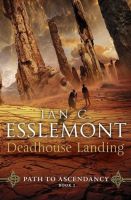 Title: Deadhouse Landing
Title: Deadhouse Landing
